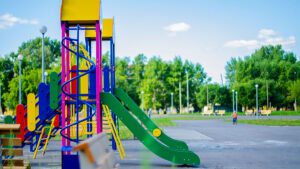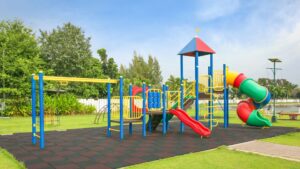Public parks are more than just patches of green amid concrete—they are vital community assets that foster recreation, well-being, and social connection. Yet not every park automatically becomes a beloved gathering place. Designing and maintaining a successful public park requires thoughtful planning, community input, and ongoing care. This article explores the core elements that distinguish exceptional parks, offering guidance for urban planners, local governments, landscape architects, and community advocates aiming to elevate their green spaces.
We cover everything from market analysis and site selection to amenities, safety, accessibility, programming, and sustainable practices. By understanding and applying these principles, communities can create parks that attract diverse users, promote health and happiness, and stand the test of time.

1. Understanding the Market and Community Needs
1.1 Community Engagement and Research
- Surveys & Workshops: Conduct surveys, focus groups, and workshops with residents to learn preferences: What activities do they seek? What gaps exist in current offerings?
- Demographics & Trends: Analyze local demographics (age groups, families vs. elder, cultural background) and trends (fitness interest, desire for quiet nature retreats vs. active play).
- Stakeholder Collaboration: Engage schools, community centers, senior groups, businesses, and non-profits early to ensure diverse perspectives shape park features.
1.2 Site Selection and Accessibility
- Central Location: Aim for a location within a 10–30-minute walk of most residents. Proximity boosts casual visits and regular use.
- Connectivity: Ensure good pedestrian, biking, and public transport access. Safe crosswalks, bike lanes, and nearby transit stops amplify reach.
- Visibility & Safety: A park visible from nearby streets or community hubs feels safer and more inviting.
- Land Suitability: Consider topography, existing vegetation, soil conditions, and drainage. A site with natural features (trees, gentle slopes, water bodies) can reduce initial costs and enhance character.

2. Integrating Nature and Biodiversity
2.1 Diverse Plantings
- Native Species: Use native trees, shrubs, and perennials to support local wildlife, require less maintenance, and withstand local climate.
- Layered Planting Zones: Combine canopy trees for shade, understory shrubs for habitat, and groundcovers or flower beds for color and erosion control.
- Seasonal Interest: Plan for year-round appeal—spring blossoms, summer shade, fall foliage, and winter structure.
2.2 Water Features and Ecosystems
- Ponds & Wetlands: Even small ponds or rain gardens can support biodiversity, offer educational opportunities, and serve as scenic focal points.
- Stormwater Management: Integrate bioswales or retention basins to manage runoff, reduce flooding, and cleanse water naturally.
- Habitat Creation: Install birdhouses, pollinator gardens, or logs for insects to foster ecological balance.
2.3 Open Green Spaces
- Lawns & Meadows: Provide open lawns for casual recreation (picnics, frisbee) and meadow areas for pollinators and low-maintenance aesthetics.
- Shade & Rest Spots: Place benches or picnic tables under tree canopies for comfort on sunny days.

3. Amenities and Seating Options
3.1 Varied Seating
- Benches & Picnic Tables: Distribute benches along paths and near playgrounds or scenic views. Picnic areas encourage longer visits.
- Flexible Seating: Incorporate movable chairs or “parklets” that users can arrange.
- Shelters & Pavilions: Covered structures protect from sun and rain, supporting group gatherings and events.
3.2 Restrooms & Changing Facilities
- Clean, Accessible Restrooms: Well-maintained facilities are critical for family-friendly parks. Ensure they are accessible for all abilities.
- Changing Stations: In parks with splashpads or water play, include changing rooms or family restrooms.
3.3 Drinking Fountains & Bottle Fillers
- Hydration Stations: Strategically place water fountains or bottle-fill stations near playgrounds, sports areas, and trails.
3.4 Shade Structures
- Pergolas, Gazebos, and Shade Sails: Offer relief from sun in play areas, seating zones, and picnic spots.

4. Play Equipment and Recreation Facilities
4.1 Inclusive Playgrounds
- Age-Appropriate Zones: Separate areas for toddlers, children, and teens to ensure safety and appeal for each group.
- Inclusive Equipment: Ramps, sensory play panels, wheelchair-accessible swings, and ground-level play elements welcome children with disabilities.
- Sensory Play: Incorporate textures, sounds, and interactive panels for children with varying developmental needs.
4.2 Sports and Active Recreation
- Multi-use Courts & Fields: Basketball courts, soccer fields, tennis courts, or multipurpose courts encourage organized or casual sports.
- Skate Zones or BMX Tracks: In areas with youth interest, provide skateparks or bike features.
- Fitness Stations & Trails: Outdoor exercise equipment and well-marked fitness trails support adult workouts.
4.3 Water Play and Splashpads
- Splash Pads: Interactive water features offer cooling fun in hot climates, require less maintenance than pools, and appeal to families.
- Natural Play Streams: Where feasible, shallow water channels with safe, controlled flow create nature-based play.
4.4 Dog Parks
- Off-Leash Areas: Fenced dog parks with agility features and seating attract pet owners and build community ties.
- Water Stations & Waste Disposal: Include dog-specific amenities like water bowls, waste bag dispensers, and shaded rest areas.

5. Safety and Security
5.1 Lighting and Visibility
- Pathway Lighting: Well-lit paths and gathering areas extend usable hours into evening and enhance safety.
- خطوط الرؤية: Design open sightlines so caregivers can monitor children; avoid hidden corners that might feel unsafe.
5.2 Security Measures
- Patrols & Staff Presence: Depending on size and usage, park rangers or security staff can deter misbehavior without overwhelming visitors.
- Emergency Call Stations: Strategically place call boxes or clearly signposted help points.
- Surveillance & Maintenance Checks: Use cameras carefully respecting privacy, and conduct routine inspections for hazards (damaged equipment, vandalism).
5.3 Design for Safety
- Soft Surfacing: Under play equipment, use impact-absorbing surfaces (rubber mulch, engineered wood fiber) meeting safety standards.
- Safe Materials: Use non-toxic, durable materials resistant to vandalism and weather.
- Age-Appropriate Design: Ensure play structures match intended user age groups, with clear signage.

6. Walking Paths and Trails
6.1 Path Network Design
- Perimeter & Internal Loops: Provide a main loop for walkers/runners and secondary trails that meander through natural areas.
- إمكانية الوصول: Ensure paths are ADA-compliant — firm, stable surfaces wide enough for wheelchairs and strollers.
- Wayfinding & Signage: Clear signage with trail maps, distance markers, and directional cues enhances user experience.
6.2 Fitness & Thematic Trails
- Fitness Stations: Install exercise stations along routes for strength, flexibility, and balance exercises.
- Educational Trails: Interpretive signage about local ecology, history, or art adds learning value.
6.3 Connectivity to Broader Networks
- Link to Bike Lanes & Greenways: Integrate park trails with larger pedestrian and cycling networks to boost accessibility and promote active transport.
- Transit Connections: Provide safe, well-marked routes from nearby transit stops.

7. Cleanliness and Maintenance
7.1 Routine Upkeep
- Scheduled Cleaning: Regularly clean restrooms, empty trash bins, and clear debris from paths and play areas.
- Landscaping Care: Mow lawns, prune trees/shrubs, replace dead plants, and maintain irrigation systems to keep green spaces lush.
- Play Equipment Inspection: Conduct frequent safety inspections to promptly repair or replace damaged components.
7.2 Community Involvement
- Volunteer Clean-Up Events: Organize monthly or seasonal “park clean-up days” to foster stewardship and keep the park tidy.
- Educational Signage: Encourage users to pack out trash, recycle, and respect park rules through friendly signs.
7.3 Budgeting for Maintenance
- Dedicated Funds: Allocate a portion of the park budget for ongoing maintenance; neglect leads to rapid decline in appeal and safety.
- الشراكات: Collaborate with local businesses or nonprofits to sponsor maintenance or donate supplies.

8. Accessibility and Inclusion
8.1 Universal Design Principles
- Physical Accessibility: All major amenities (paths, restrooms, seating, play areas) should be wheelchair-accessible.
- Sensory Considerations: Provide quiet zones, varied textures, and inclusive play options for neurodiverse users.
- Cultural Inclusivity: Include art or design features reflecting local cultures; host multilingual signage if relevant.
8.2 Programming for All Ages
- Intergenerational Spaces: Design areas where grandparents and grandchildren can interact (e.g., picnic areas near playgrounds).
- Senior-Friendly Features: Benches with armrests, smooth walking loops, gentle exercise stations.
- Youth Engagement: Provide appealing teen hangout spots (shaded seating, sports courts) to prevent underuse by older kids.

9. Sustainability and Environmental Stewardship
9.1 Eco-Friendly Materials & Practices
- Sustainable Materials: Use recycled or sustainably sourced materials for benches, play structures, and hardscape.
- Low-Impact Construction: Minimize soil disturbance; preserve mature trees and natural habitats during development.
- Renewable Energy: Install solar lighting or charging stations where feasible.
9.2 Water Conservation
- Efficient Irrigation: Drip systems, smart controllers, and drought-tolerant plantings reduce water use.
- Rainwater Harvesting: Collect rainwater for irrigation or water features.
9.3 Waste Reduction
- Recycling Stations: Provide well-labeled recycling bins alongside trash cans.
- Composting: In community gardens or food-event areas, offer composting options.
9.4 Wildlife-Friendly Design
- Habitat Pockets: Leave small undisturbed areas or create micro-habitats for birds and pollinators.
- Night Lighting: Use downward-facing, low-intensity lighting to minimize light pollution and protect nocturnal species.

10. Cultural Events, Programming, and Community Engagement
10.1 Regular Events
- Concerts, Performances & Festivals: Seasonal outdoor concerts, cultural festivals, and movie nights draw diverse audiences.
- Fitness Classes: Yoga, tai chi, or dance sessions in open lawns encourage healthy lifestyles.
- Educational Workshops: Nature walks, gardening classes, or art workshops deepen community connection to the park.
10.2 Art and Public Installations
- Temporary Exhibits: Rotating art installations or interactive sculptures keep the park experience fresh.
- Murals & Statues: Reflect local heritage and create photo-worthy spots that boost social media visibility.
10.3 Community Partnerships
- Local Businesses & Nonprofits: Collaborate on sponsorships, joint events, or maintenance support.
- Schools & Youth Groups: Engage student projects for plantings, art, or science research in the park.
- Volunteer Programs: Establish “Park Ambassadors” who guide visitors, report issues, or lead tours.
11. Technology and Innovation
11.1 Digital Engagement
- Mobile Apps & QR Codes: Provide trail maps, event schedules, or interpretive content via smartphones.
- Wi-Fi Access: Selectively offer free Wi-Fi hotspots in gathering areas to support remote work or event streaming.
11.2 Smart Infrastructure
- Sensors & Monitoring: Use sensors for lighting control, irrigation scheduling, and real-time visitor counts to optimize operations.
- Interactive Play: Integrate augmented reality features or interactive kiosks for educational games.
11.3 Safety Tech
- Emergency Alerts: Digital displays or apps that warn visitors of severe weather or other hazards.
- Surveillance with Privacy in Mind: Strategically placed cameras in high-traffic zones, balancing security and user privacy.
12. Budgeting, Funding, and Financial Sustainability
12.1 Diverse Funding Sources
- Public Funding & Grants: Apply for municipal, state, or federal grants aimed at green spaces, recreation, or community health.
- Private Sponsorships: Partner with local businesses for naming rights (benches, playground sections) or event sponsorship.
- User Fees & Memberships: For specific amenities (community garden plots, sports leagues), consider modest fees to support maintenance.
12.2 Cost-Effective Design Choices
- Phased Development: Roll out park features in stages, matching funding cycles and community priorities.
- Multi-Use Infrastructure: Design elements that serve multiple functions (e.g., shaded pavilions that host events and provide seating).
- Volunteer and In-Kind Contributions: Leverage community labor days for planting or minor construction tasks.
12.3 Maintenance Endowment
- Dedicated Reserve Funds: Allocate a portion of initial capital for long-term maintenance to avoid neglect when budgets tighten.
- Insurance & Liability Management: Ensure adequate coverage and regular safety audits to minimize costly incidents.
13. Measuring Success and Continuous Improvement
13.1 Performance Metrics
- Usage Statistics: Track visitor counts, event attendance, and program participation.
- Satisfaction Surveys: Periodically survey users about amenities, safety, cleanliness, and desired improvements.
- Health & Well-Being Indicators: Collaborate with local health agencies to assess whether park usage correlates with community health metrics (e.g., physical activity rates).
13.2 Feedback Loops
- Open Channels: Maintain suggestion boxes, online forums, or social media platforms for ongoing feedback.
- Adaptive Management: Use data and feedback to adjust programming, maintenance schedules, or amenity offerings as needs evolve.
13.3 Celebrating Milestones
- Anniversary Events: Commemorate park openings or major renovations to re-engage the community.
- Recognition Programs: Acknowledge volunteers, sponsors, or “Park Champions” who contribute significantly.
الخاتمة
Creating a successful public park demands more than simply planting trees and installing benches. It requires a holistic approach that balances community needs, safety, accessibility, nature integration, amenities, programming, sustainability, and ongoing stewardship. By carefully analyzing the market and site, designing inclusive and engaging features, maintaining high standards of cleanliness and safety, and fostering community involvement, parks can become cherished assets that enhance quality of life.
Whether you are a local official, landscape architect, community organizer, or park manager, applying these elements helps ensure your park remains vibrant, well-used, and beloved for years to come. Start with thorough community engagement, plan strategically, secure diverse funding, and commit to continuous improvement. In doing so, you’ll create a public park that not only looks appealing but truly serves and uplifts its community.




